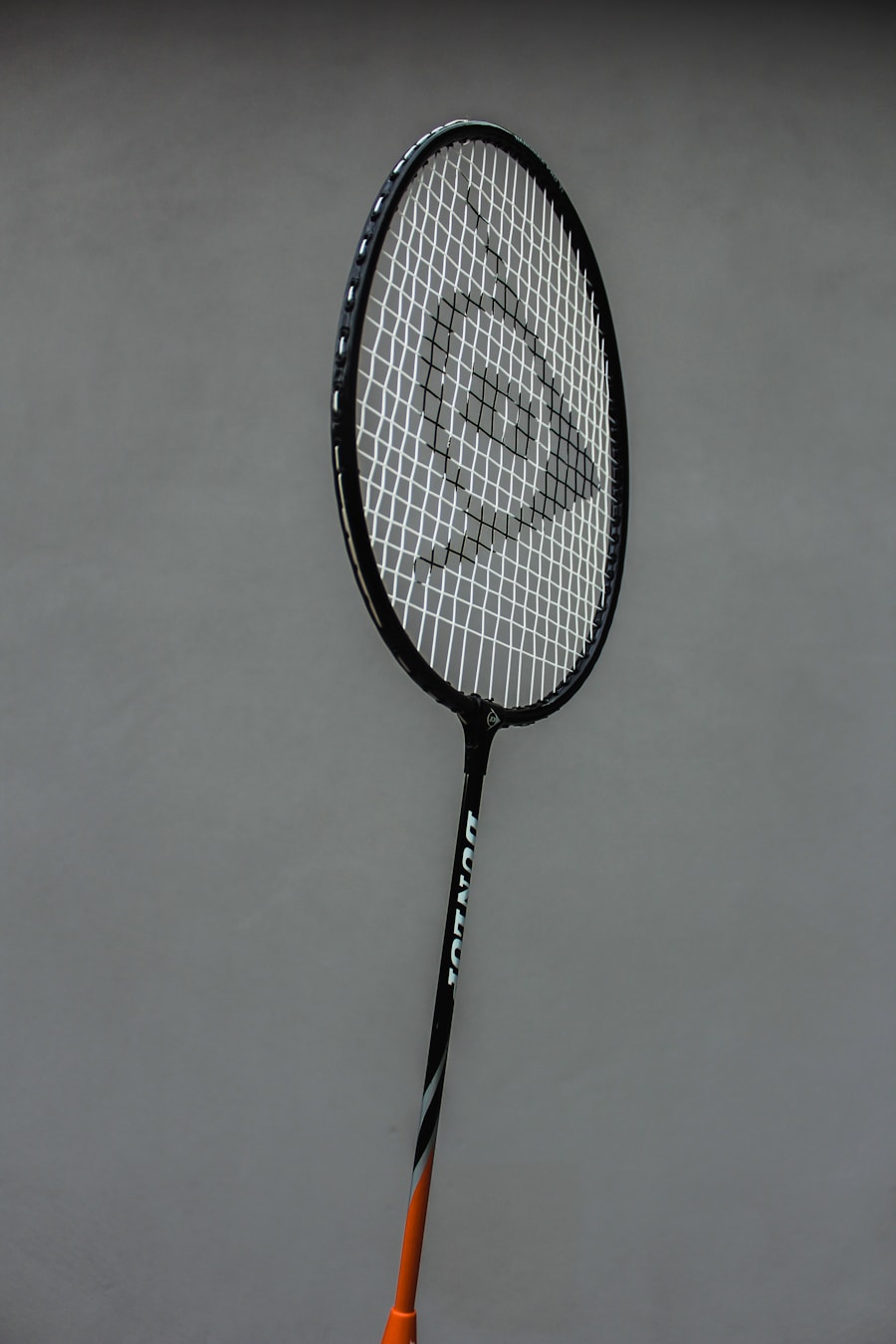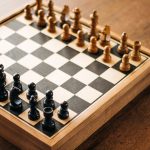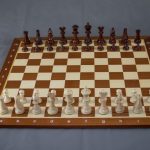Download links
How to install Mastering the Art of Badminton: Tips for Success APK?
1. Tap the downloaded Mastering the Art of Badminton: Tips for Success APK file.
2. Touch install.
3. Follow the steps on the screen.
Description
Badminton is a fast-paced racquet sport that has gained immense popularity worldwide, both as a competitive sport and a recreational activity. The game is played on a rectangular court divided by a net, with players using lightweight racquets to hit a shuttlecock back and forth. The objective is to score points by landing the shuttlecock in the opponent’s court while preventing them from doing the same.
The rules of badminton are relatively straightforward, making it accessible to players of all ages and skill levels. Each match can be played in singles or doubles format, adding to the game’s versatility and appeal. The fundamental rules of badminton dictate that a rally begins with one player serving the shuttlecock from behind the service line.
The shuttlecock must be struck below the server’s waist and must travel diagonally across the net into the opponent’s service box. Points are scored when the shuttlecock lands in the opponent’s court, or when the opponent fails to return it properly. The game is played to 21 points, with players needing to win by at least two points.
Key Takeaways
- Badminton is a fast-paced racket sport played with a shuttlecock, and requires agility, speed, and precision.
- Perfecting techniques such as grip, stance, and footwork is essential for mastering the game and preventing injuries.
- Developing a strategic game plan involves understanding your opponent’s weaknesses and capitalizing on your strengths.
- Improving physical fitness and endurance through cardio, strength training, and flexibility exercises is crucial for sustaining high-intensity rallies.
- Mental preparation and focus are key for maintaining composure, making quick decisions, and staying resilient during matches.
Perfecting Your Techniques and Footwork
The Importance of Grip
One of the most important techniques is the grip on the racquet. Players typically use either the forehand or backhand grip, depending on the shot being executed. A proper grip allows for better control and power in shots, whether it be a clear, drop shot, or smash. For instance, when executing a forehand clear, players should hold the racquet with a relaxed grip, allowing for a fluid swing that generates both height and distance.
The Vital Role of Footwork
Footwork is equally vital in badminton, as it enables players to position themselves optimally for each shot. Quick and agile footwork allows players to move efficiently around the court, ensuring they can reach the shuttlecock in time to make an effective return. Practicing footwork drills can significantly enhance a player’s agility and speed.
Improving Footwork through Training
For example, shadow badminton—where players mimic movements without hitting a shuttlecock—can help develop muscle memory for various footwork patterns. Additionally, incorporating lateral movements and quick sprints into training routines can improve overall court coverage, making it easier to respond to opponents’ shots.
Developing Your Strategy and Game Plan

A successful badminton player must not only rely on technical skills but also develop a strategic mindset that can adapt to different opponents and match situations. Understanding your own strengths and weaknesses, as well as those of your opponent, is crucial in formulating an effective game plan. For instance, if a player excels at net play but struggles with powerful smashes, they might focus on playing close to the net, utilizing drop shots and net kills to pressure their opponent.
Moreover, analyzing an opponent’s playing style can provide valuable insights into how to approach a match. If an opponent tends to favor backhand shots, a player might aim to exploit this weakness by directing more shots towards their forehand side. Additionally, varying shot placement and speed can disrupt an opponent’s rhythm, making it difficult for them to anticipate the next move.
This strategic approach not only enhances a player’s chances of winning but also adds an element of psychological warfare to the game, as players must constantly adapt their strategies based on real-time observations.
Improving Your Physical Fitness and Endurance
| Exercise | Duration | Frequency |
|---|---|---|
| Running | 30 minutes | 3 times per week |
| Cycling | 45 minutes | 4 times per week |
| Swimming | 60 minutes | 2 times per week |
| Strength Training | 45 minutes | 3 times per week |
Physical fitness plays a pivotal role in badminton performance, as the sport demands quick bursts of speed, agility, and endurance. Players must be able to sustain high levels of energy throughout matches that can last for extended periods. Incorporating a well-rounded fitness regimen that includes cardiovascular training, strength training, and flexibility exercises is essential for any serious badminton player.
For example, running or cycling can improve cardiovascular endurance, allowing players to maintain their energy levels during long rallies. Strength training is equally important, as it enhances muscle power and stability. Exercises such as squats, lunges, and core workouts can build the necessary strength for explosive movements on the court.
Flexibility training through stretching or yoga can prevent injuries and improve range of motion, which is crucial for executing various shots effectively. By focusing on these aspects of physical fitness, players can enhance their overall performance and reduce the risk of injury during intense matches.
Mental Preparation and Focus
Mental preparation is often overlooked in sports training but is just as critical as physical conditioning. Badminton requires intense concentration and mental resilience, especially during high-pressure situations such as match points or tight games. Developing mental toughness involves practicing visualization techniques where players imagine themselves successfully executing shots or winning crucial points.
This mental rehearsal can boost confidence and reduce anxiety during actual matches. Additionally, mindfulness practices such as meditation can help players maintain focus and composure on the court. By learning to control their thoughts and emotions, players can better manage stress and distractions that may arise during competition.
Techniques such as deep breathing can also be beneficial in calming nerves before or during matches. A strong mental game allows players to stay present in the moment, make better decisions under pressure, and ultimately perform at their best.
Honing Your Skills through Practice and Training

Consistent practice is essential for honing badminton skills and achieving mastery in the sport. Structured training sessions that focus on specific aspects of gameplay—such as serving, smashing, or defensive techniques—can lead to significant improvements over time. For instance, dedicating time to practice serves can enhance accuracy and consistency, which are vital for gaining an early advantage in rallies.
Moreover, participating in drills with partners or coaches can provide valuable feedback on technique and strategy. Engaging in match play against various opponents can also expose players to different styles of play, helping them adapt their strategies accordingly. Regularly competing in local tournaments or leagues can further enhance skills under competitive conditions while fostering a sense of community among players.
Recording practice sessions or matches allows players to review their performance critically, identifying areas for improvement that may not be apparent during play. By combining these various training methods—structured practice sessions, competitive play, feedback from coaches or peers, and self-analysis—players can continuously refine their skills and elevate their game to new heights.
If you are looking to maximize your game in badminton, you should check out this article on Taya777 Online Sports. This platform offers valuable insights and tips to help you improve your skills and performance on the court. Additionally, if you are interested in exploring popular apps related to sports, you can visit this article for recommendations. Whether you are a beginner or a seasoned player, these resources can help you take your badminton game to the next level.
FAQs
What is badminton?
Badminton is a racquet sport played by either two opposing players (singles) or two opposing pairs (doubles), who take positions on opposite halves of a rectangular court divided by a net.
What equipment is used in badminton?
The primary equipment used in badminton includes a shuttlecock (also known as a birdie), badminton racquets, and a net. Players also typically wear appropriate athletic clothing and non-marking shoes.
What are the basic rules of badminton?
The basic rules of badminton include serving diagonally, scoring points by landing the shuttlecock within the opponent’s court, and winning a match by winning two out of three games.
What are the health benefits of playing badminton?
Playing badminton can provide numerous health benefits, including improved cardiovascular fitness, agility, coordination, and flexibility. It also helps in burning calories and can be a great way to stay active and fit.
What are the different types of badminton shots?
Some of the different types of badminton shots include the clear, drop shot, smash, drive, and the net shot. Each shot has its own specific technique and purpose in the game.
What are the different types of badminton tournaments?
There are various types of badminton tournaments, including local, national, and international competitions. The most prestigious international tournaments include the All England Open, BWF World Championships, and the Olympic Games.





